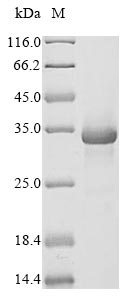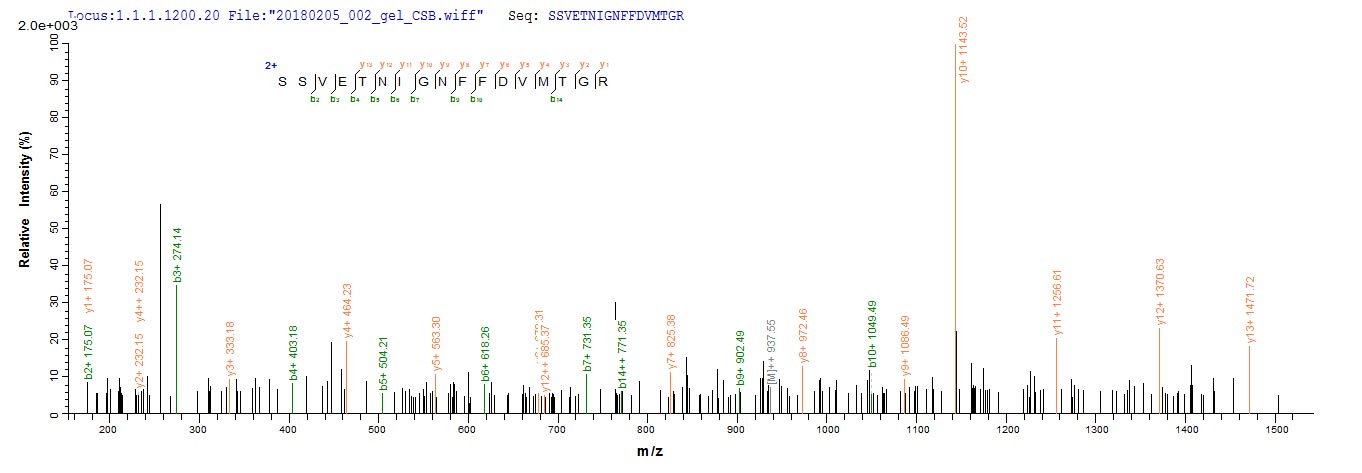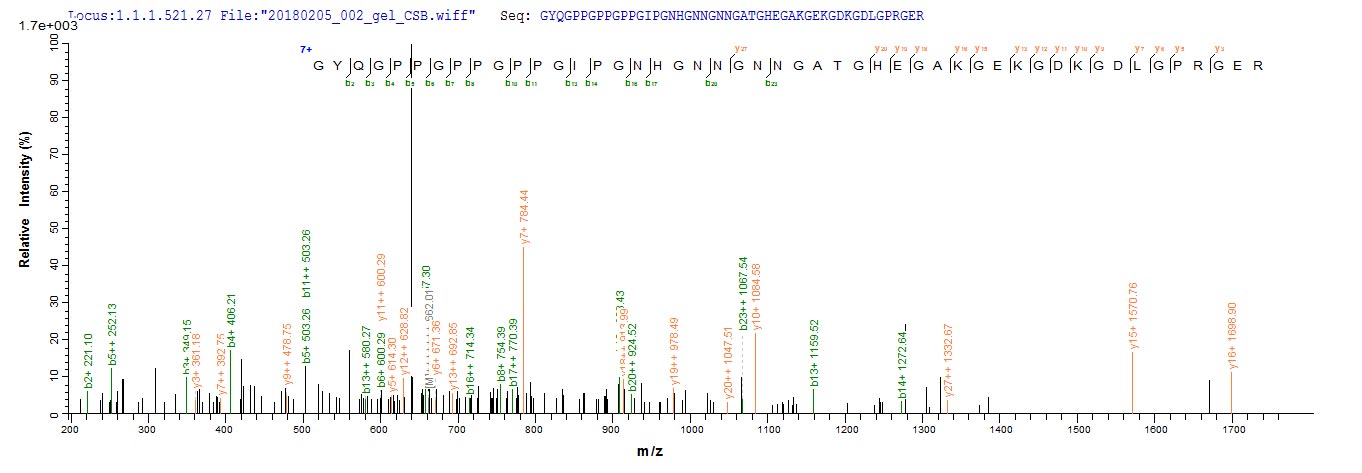The production of recombinant mouse complement C1q tumor necrosis factor-related protein 3 (C1qtnf3) begins with isolating the C1qtnf3 protein-encoding gene (23-246aa). This gene is cloned into an expression vector with an N-terminal 10xHis-tag gene and a C-terminal Myc-tag gene and then transfected into E.coli cells through transformation. The E.coli cells express the protein, which is then harvested from the cell lysate. The protein is purified using affinity chromatography. Finally, the protein's purity is measured by SDS-PAGE, reaching over 90%.
Mouse C1qtnf3, also known as CTRP3, is a protein that has been implicated in various physiological processes and diseases. Studies have shown that C1qtnf3 is highly expressed in mouse models of arthritis, where it plays a protective role by attenuating systemic inflammation and reducing arthritis severity [1][2]. C1qtnf3 promotes the proliferation and migration of mouse endothelial cells [3]. In the context of adipose tissue remodeling, C1qtnf3 is upregulated during subcutaneous adipose tissue remodeling and stimulates macrophage chemotaxis and M1-like polarization [4].
Furthermore, C1qtnf3 has been identified as a downstream molecule of HIF-1α, exerting anti-catabolic effects through the suppression of NF-κB signaling [5]. In the ovary, C1qtnf3 plays a role in folliculogenesis, with its expression being significantly decreased by excess androgen [6]. C1qtnf3 also regulates chondrogenic cell proliferation via the adiponectin receptor 2 [7].
References:
[1] A. Myngbay, L. Manarbek, S. Ludbrook, & J. Kunz, The role of collagen triple helix repeat-containing 1 protein (cthrc1) in rheumatoid arthritis, International Journal of Molecular Sciences, vol. 22, no. 5, p. 2426, 2021. https://doi.org/10.3390/ijms22052426
[2] M. Murayama, S. Kakuta, T. Maruhashi, K. Shimizu, A. Seno, S. Kuboet al., Ctrp3 plays an important role in the development of collagen-induced arthritis in mice, Biochemical and Biophysical Research Communications, vol. 443, no. 1, p. 42-48, 2014. https://doi.org/10.1016/j.bbrc.2013.11.040
[3] A. Coussens, C. Wilkinson, I. Hughes, C. Morris, A. Daal, P. Andersonet al., Unravelling the molecular control of calvarial suture fusion in children with craniosynostosis, BMC Genomics, vol. 8, no. 1, 2007. https://doi.org/10.1186/1471-2164-8-458
[4] P. Micallef, M. Vujičić, Y. Wu, E. Peris, Y. Wang, B. Chanclónet al., C1qtnf3 is upregulated during subcutaneous adipose tissue remodeling and stimulates macrophage chemotaxis and m1-like polarization, Frontiers in Immunology, vol. 13, 2022. https://doi.org/10.3389/fimmu.2022.914956
[5] K. Okada, D. Mori, Y. Makii, H. Nakamoto, Y. Murahashi, F. Yanoet al., Hypoxia-inducible factor-1 alpha maintains mouse articular cartilage through suppression of nf-κb signaling, Scientific Reports, vol. 10, no. 1, 2020. https://doi.org/10.1038/s41598-020-62463-4
[6] Z. Mao, L. Yang, X. Lu, A. Tan, Y. Wang, F. Dinget al., C1qtnf3 in the murine ovary and its function in folliculogenesis, Reproduction, vol. 155, no. 4, p. 333-346, 2018. https://doi.org/10.1530/rep-17-0783
[7] M. Murayama and Y. Iwakura, C1q/tnf-related protein 3 regulates chondrogenic cell proliferation via adiponectin receptor 2 (progestin and adipoq receptor 2), Translational and Regulatory Sciences, vol. 2, no. 1, p. 19-23, 2020. https://doi.org/10.33611/trs.2_19









